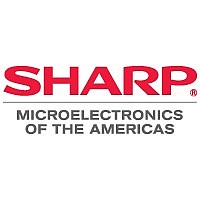LH28F320S5HNS-ZP Sharp Electronics, LH28F320S5HNS-ZP Datasheet - Page 20

LH28F320S5HNS-ZP
Manufacturer Part Number
LH28F320S5HNS-ZP
Description
Manufacturer
Sharp Electronics
Datasheet
1.LH28F320S5HNS-ZP.pdf
(64 pages)
Specifications of LH28F320S5HNS-ZP
Cell Type
NOR
Density
32Mb
Access Time (max)
100ns
Interface Type
Parallel
Boot Type
Not Required
Address Bus
22/21Bit
Operating Supply Voltage (typ)
5V
Operating Temp Range
-40C to 85C
Package Type
SSOP
Program/erase Volt (typ)
4.5 to 5.5V
Sync/async
Asynchronous
Operating Temperature Classification
Industrial
Operating Supply Voltage (min)
4.5V
Operating Supply Voltage (max)
5.5V
Word Size
8/16Bit
Number Of Words
4M/2M
Supply Current
75mA
Mounting
Surface Mount
Pin Count
56
Lead Free Status / Rohs Status
Compliant
Available stocks
Company
Part Number
Manufacturer
Quantity
Price
Company:
Part Number:
LH28F320S5HNS-ZP
Manufacturer:
NATEL
Quantity:
22
4.8 Word/Byte Write Command
Word/byte write is executed by a two-cycle command
sequence. Word/Byte Write setup (standard 40H or
alternate 10H) is written, followed by a second write
that specifies the address and data (latched on the
rising edge of WE#). The WSM then takes over,
controlling the word/byte write and write verify
algorithms internally. After the word/byte write
sequence is written, the device automatically outputs
status register data when read (see Figure 7). The
CPU can detect the completion of the word/byte write
event by analyzing the STS pin or status register bit
SR.7.
When word/byte write is complete, status register bit
SR.4 should be checked. If word/byte write error is
detected, the status register should be cleared. The
internal WSM verify only detects errors for "1"s that
do not successfully write to "0"s. The CUI remains in
read status register mode until it receives another
command.
Reliable word/byte writes can only occur when
V
high voltage, memory contents are protected against
word/byte writes. If word/byte write is attempted while
V
set to "1". Successful word/byte write requires that
the corresponding block lock-bit be cleared or, if set,
that WP#=V
the corresponding block lock-bit is set and WP#=V
SR.1 and SR.4 will be set to "1". Word/byte write
operations with V
results and should not be attempted.
4.9 Multi Word/Byte Write Command
Multi word/byte write is executed by at least four-
cycle or up to 35-cycle command sequence. Up to
32 bytes in x8 mode (16 words in x16 mode) can be
loaded into the buffer and written to the Flash Array.
First, multi word/byte write setup (E8H) is written with
the write address. At this point, the device
automatically outputs extended status register data
(XSR) when read (see Figure 8, 9). If extended
status register bit XSR.7 is 0, no Multi Word/Byte
Write command is available and multi word/byte write
setup which just has been written is ignored. To retry,
CC
PP
≤V
=V
PPLK
CC1/2
, status register bits SR.3 and SR.4 will be
IH
and V
. If word/byte write is attempted when
PP
IL
=V
<WP#<V
PPH1
. In the absence of this
IH
produce spurious
LHF32KZP
IL
,
continue monitoring XSR.7 by writing multi word/byte
write setup with write address until XSR.7 transitions
to 1. When XSR.7 transitions to 1, the device is ready
for loading the data to the buffer. A word/byte count
(N)-1 is written with write address. After writing a
word/byte count(N)-1, the device automatically turns
back to output status register data. The word/byte
count (N)-1 must be less than or equal to 1FH in x8
mode (0FH in x16 mode). On the next write, device
start address is written with buffer data. Subsequent
writes provide additional device address and data,
depending on the count. All subsequent address
must lie within the start address plus the count. After
the final buffer data is written, write confirm (D0H)
must be written. This initiates WSM to begin copying
the buffer data to the Flash Array. An invalid Multi
Word/Byte Write command sequence will result in
both status register bits SR.4 and SR.5 being set to
"1". For additional multi word/byte write, write another
multi word/byte write setup and check XSR.7. The
Multi Word/Byte Write command can be queued
while WSM is busy as long as XSR.7 indicates "1",
because LH28F320S5HNS-ZP has two buffers. If an
error occurs while writing, the device will stop writing
and flush next multi word/byte write command loaded
in multi word/byte write command. Status register bit
SR.4 will be set to "1". No multi word/byte write
command is available if either SR.4 or SR.5 are set
to "1". SR.4 and SR.5 should be cleared before
issuing multi word/byte write command. If a multi
word/byte write command is attempted past an erase
block boundary, the device will write the data to Flash
Array up to an erase block boundary and then stop
writing. Status register bits SR.4 and SR.5 will be set
to "1".
Reliable multi byte writes can only occur when
V
high voltage, memory contents are protected against
multi word/byte writes. If multi word/byte write is
attempted while V
and SR.4 will be set to "1". Successful multi
word/byte write requires that the corresponding block
lock-bit be cleared or, if set, that WP#=V
byte write is attempted when the corresponding block
lock-bit is set and WP#=V
set to "1".
CC
=V
CC1/2
and V
PP
PP
≤V
=V
PPLK
PPH1
IL
, status register bits SR.3
, SR.1 and SR.4 will be
. In the absence of this
IH
. If multi
Rev. 1.6
17
















